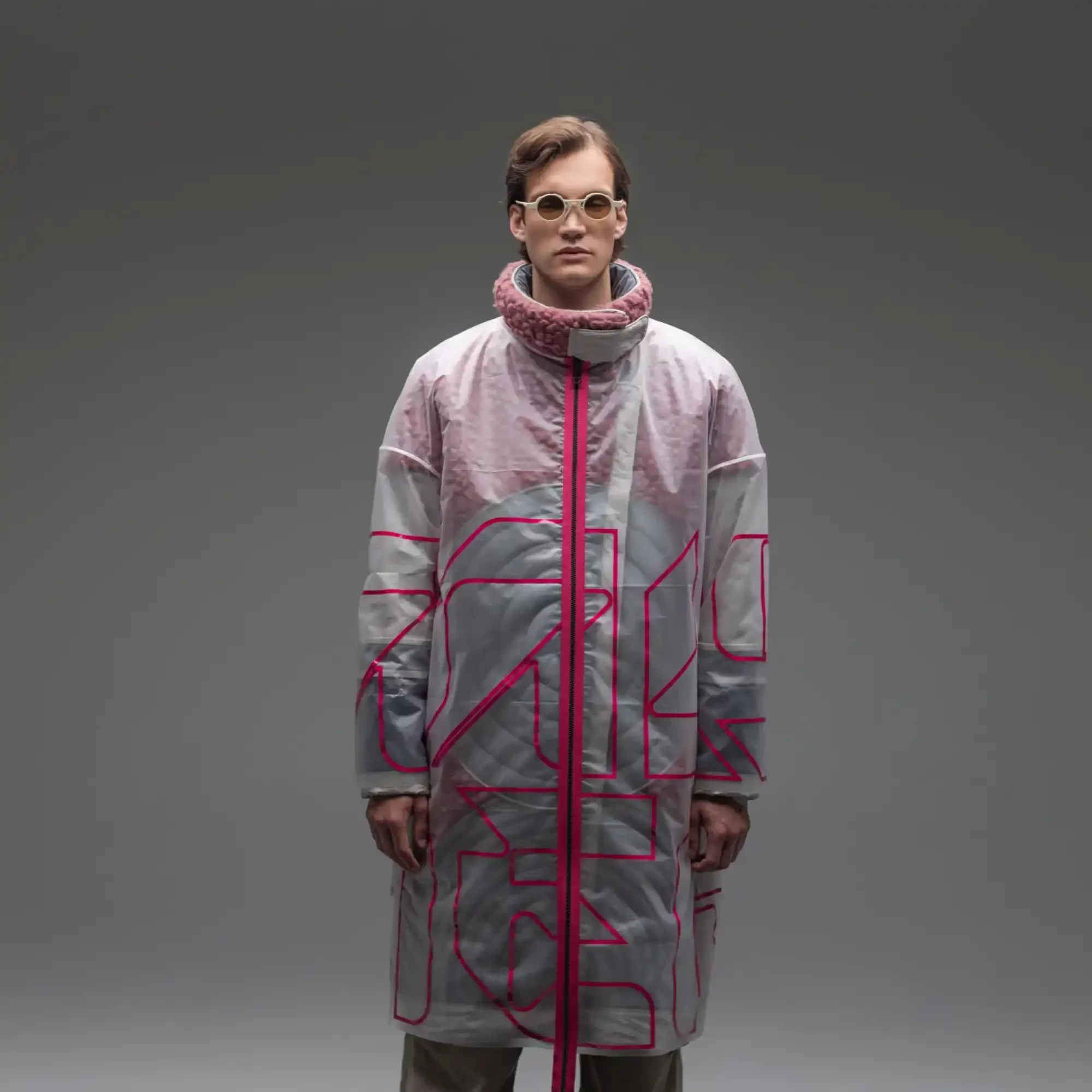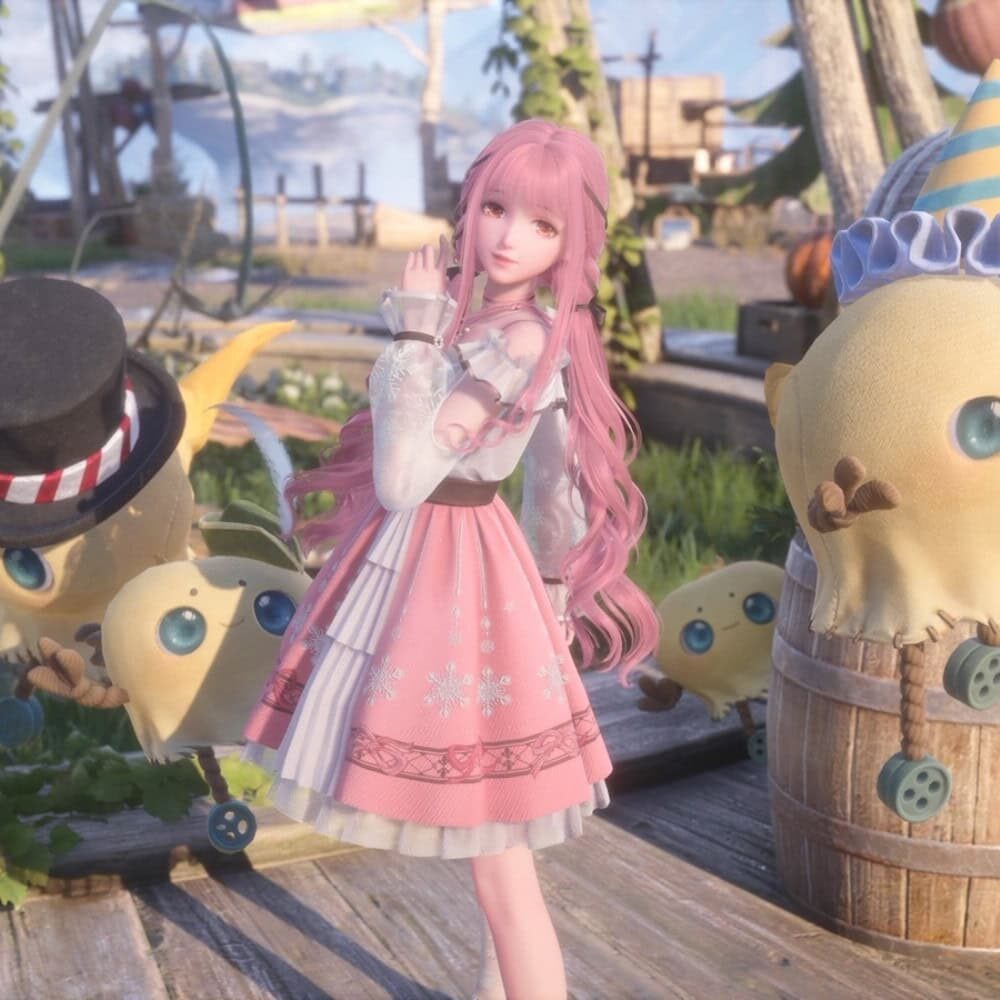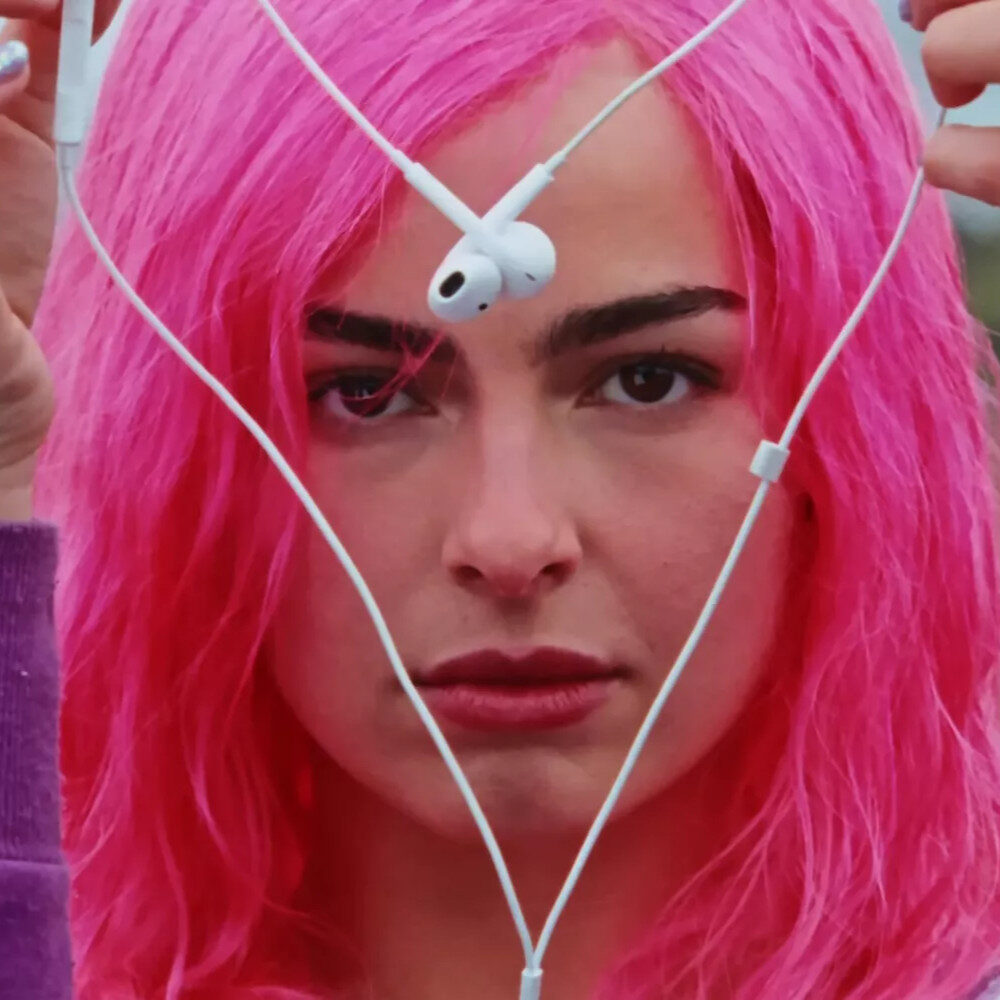
So Kawaii: Exploring the Pastel Pink Underbelly of the ‘Cute Boom’
Written by Amelia Masters The word ‘kawaii’ derives from the phrase ‘kao hayushi,’ which translates to ‘one’s face is aglow.’ When I think of the roots of kawaii and ‘cute culture,’ I think of Japan – well, more specifically – Tokyo. Kawaii flourished in post-World War II Japan, where a new generation of the middle class had more disposable income. With this consumer culture, what better way to spend your pennies than on a plastic miniature or something brightly coloured and visually appealing? Shojo Manga (a type of manga aimed at young girls) not only influenced Studio Ghibli’s ‘Spirited Away’…
TEXT
Written by Amelia Masters
The word ‘kawaii’ derives from the phrase ‘kao hayushi,’ which translates to ‘one’s face is aglow.’ When I think of the roots of kawaii and ‘cute culture,’ I think of Japan – well, more specifically – Tokyo. Kawaii flourished in post-World War II Japan, where a new generation of the middle class had more disposable income. With this consumer culture, what better way to spend your pennies than on a plastic miniature or something brightly coloured and visually appealing? Shojo Manga (a type of manga aimed at young girls) not only influenced Studio Ghibli’s ‘Spirited Away’ but also the kawaii aesthetics we see now online and on the streets. This, along with the 1974 creation of Sanrio’s ‘Hello Kitty,’ pushed kawaii into mainstream consciousness, leaving a trail of plastic glitter and mini-everything in its wake.

The deeper lure to what my mum might call ‘tack’ is (for me at least) rooted in childhood. The desire to spend money on this kind of stuff has never been stronger than when I received my first paycheck. Now, I come home and proudly gaze upon my shelves of trinkets after every twelve-hour shift. There is Perhaps no better example of this strong desire to consume cute culture than the Kewpie-inspired ‘Sonny Angels,’ referred to as a ‘little boyfriend’ by creator Toru Soeya to help young women with the stresses of adulthood, similar to the little worry dolls my parents might have bought me as a young teen the trinket has recently blown up on Tik Tok and other platforms proving that ‘cute’ is not yet dead.
___STEADY_PAYWALL___
The curator of the recent ‘CUTE’ exhibition at London’s Somerset House which celebrates the 50th birthday of Hello Kitty admits, ‘cuteness has slowly been taking over the world,’ in a recent interview with the Guardian. I had the pleasure of visiting this exhibition and found it to be different from what I expected. The few children in attendance were outnumbered by the masses of adults exhibiting their own ‘kao hayushi,’ styled in J-fashion (Japanese fashion) and multitudes of color and Hello Kitty everything. The exhibition was a plethora of recent and not-so-recent media creating a visual history of ‘cute.’ From the main feature, Hello Kitty, to cat memes, Pokémon, Tamagotchis, Furbys, Animal Crossing, and a darker version of ‘cute’ suggested by the featured art of Julian Ceccaldi, whose piece ‘Door to Cockaigne’ made me shiver more than blush.

Other recent examples of this thriving ‘cute’ culture include a pop-up marketplace in London curated by young creatives called Bisoux.66, ‘a space to celebrate the creativity of underground subculture in London,’ filled with artists selling their crafts and trades—from stick-and-poke tattoos to 3D press-on nails to prints and Harajuku-inspired fashion. Chinese model Mia Wells pays homage to kawaii Japanese-inspired fashion in her recent zine titled ‘MIA ZINE.’ The series of photos and questions featuring the model make us look once again towards ‘cute.’ Posed with a mountain of Miffy plushies and other such characters, the sold-out zine proves the legacy of ‘cute’ once again. ‘Cute’ has turned into a multi-faceted term that applies to anything: people, media, gaming, and fashion. Just this week high-end fashion brand and Chopova Lowena announced a collab with USA based shop Nordstrom and Hello Kitty showcasing items of clothing I would in fact sell my soul for.
And with Fruits magazine once again on the rise and covering the coffee tables of every city-based fashion influencer we can only anticipate the growth of ‘Cute’. To just look through the pages of this magazine you get a sense of how maximalism and ‘Cute’ work hand in hand. Together, they represent something ‘new’ (or rather, lost)—a bold regression to a time of Hello Kitty flip phones and lip glosses shaped like popular fizzy beverages. Recently the magazine hosted an exhibition in Tokyo, with art presented dated ‘1997-2003+2024,’ highlighting its recent revival. Artist and model Beabadoobee graced the cover of one issue. The magazine’s pages highlighted the cool kids of Japan. Editor Shoichi Aoki stated back in 2017, before its revival, that there were simply ‘no more cool kids to photograph.’ Looking through the most recent snapshots of Tokyo youth, you can see the kawaii revival I mention, dripping from the photos. Bows, Sanrio accessories, pastel colours, and maximalism hold precedence; the only notable difference is the slightly more advanced photo quality. Armed with their Hello Kitty bags, bright tights, and hime haircuts, these youth are at the forefront of the kawaii revival, walking the same streets as their predecessors just twenty-five years before. Tokyo presents itself once again as the home for this revival with its store ‘Junie Moon,’ a shop that describes itself as ‘the ultimate store for Blythe fans all over the world.’ Originally created in 1972 by designer Allison Katzman and sold for only one year in the United States, Blythe Dolls are 28cm dolls with large eyes and blushed features whose outfits rival those of their owners. Fashion brands such as Vivienne Westwood and Hysteric Glamour make mini clothes for the dolls. In 2001, the doll was bought by Japanese brand Takara, and you can now find the mini-you lining the shelves of Junie Moon (for a price). Brands such as Urban Outfitters profit from this trend; the American site sells out almost instantly of the three-figure dolls popularized by influencers such as Enya Umanzor. The cost of this cute globalization is extortionate, yet many, including myself, might argue the cost is little compared to the enjoyment it brings.


One such company that has also picked up on this trend is Nintendo. Nintendogs paved the way for the game Animal Crossing. With its cute characters, aesthetics, and gaming, it makes for a perfect night in. We know that now more than ever, mental and physical health is increasingly appreciated by young people (myself included). More and more, I have seen a rise in people ditching nights out to prioritize routine and happiness above all. The idea of a night in bed surrounded by my subjectively bad spending choices, Nintendo in hand, makes it all feel worth it. Induced perhaps by the pandemic and the downtime it allowed people, Animal Crossing: New Horizons sold nearly three and a half times more than any other game in the series, which has been running since 2001. Perhaps it’s the control level, the way you can dictate your world, what it looks like, and to an extent, the people in it. Or perhaps, on a lighter note, it’s the cute characters and the feelings they evoke. Either way, it’s here to stay.
So, what, you might ask, is the issue with ‘cute’? Having an online presence opens you up to a multitude of opinions and ideas. Throughout the years, ‘cute’ has been sexualized and misplaced. From the Americana aesthetic being misconstrued through its ties to the 1960s Vladimir Nabokov novel ‘Lolita,’ associations seem to take the limelight, frustrating many young women (and men). This is prevalent in anything from anime to the sexualization of the ‘gamer girl.’ Anyone associated with the word ‘cute’ may have their own version of inappropriate comments or questions due to their interests or the way they dress. Yet we are not liable for other people’s miseducation and misjudgement despite whatever incel Reddit may lead us to believe.

Looking towards the media we consume, ‘cute’ has deflected into our worlds slowly and carefully. In the ever-evolving world of fashion, ‘cute’ and ‘kawaii’ have made a sophisticated comeback, seamlessly merging nostalgic charm with a contemporary edge to reclaim their place as the ultimate expression of being. As someone whose childhood has never truly left them, my lexicon of cute has only expanded with age. Cute is something that makes us feel safe, something that screams small and collectible and appealing sensory-wise. Cute is pocketable, it’s safe and familiar, and if you are anything like me, it’s something that can be harmful to your bank account given a good mood and access to Apple Pay. But, most importantly, cute is for everyone. It’s accessible and non-threatening in a world that’s ever-changing. Cute is permanent when nothing else is.
Written by Amelia Masters
The word ‘kawaii’ derives from the phrase ‘kao hayushi,’ which translates to ‘one’s face is aglow.’ When I think of the roots of kawaii and ‘cute culture,’ I think of Japan – well, more specifically – Tokyo. Kawaii flourished in post-World War II Japan, where a new generation of the middle class had more disposable income. With this consumer culture, what better way to spend your pennies than on a plastic miniature or something brightly coloured and visually appealing? Shojo Manga (a type of manga aimed at young girls) not only influenced Studio Ghibli’s ‘Spirited Away’ but also the kawaii aesthetics we see now online and on the streets. This, along with the 1974 creation of Sanrio’s ‘Hello Kitty,’ pushed kawaii into mainstream consciousness, leaving a trail of plastic glitter and mini-everything in its wake.

The deeper lure to what my mum might call ‘tack’ is (for me at least) rooted in childhood. The desire to spend money on this kind of stuff has never been stronger than when I received my first paycheck. Now, I come home and proudly gaze upon my shelves of trinkets after every twelve-hour shift. There is Perhaps no better example of this strong desire to consume cute culture than the Kewpie-inspired ‘Sonny Angels,’ referred to as a ‘little boyfriend’ by creator Toru Soeya to help young women with the stresses of adulthood, similar to the little worry dolls my parents might have bought me as a young teen the trinket has recently blown up on Tik Tok and other platforms proving that ‘cute’ is not yet dead.
___STEADY_PAYWALL___
The curator of the recent ‘CUTE’ exhibition at London’s Somerset House which celebrates the 50th birthday of Hello Kitty admits, ‘cuteness has slowly been taking over the world,’ in a recent interview with the Guardian. I had the pleasure of visiting this exhibition and found it to be different from what I expected. The few children in attendance were outnumbered by the masses of adults exhibiting their own ‘kao hayushi,’ styled in J-fashion (Japanese fashion) and multitudes of color and Hello Kitty everything. The exhibition was a plethora of recent and not-so-recent media creating a visual history of ‘cute.’ From the main feature, Hello Kitty, to cat memes, Pokémon, Tamagotchis, Furbys, Animal Crossing, and a darker version of ‘cute’ suggested by the featured art of Julian Ceccaldi, whose piece ‘Door to Cockaigne’ made me shiver more than blush.

Other recent examples of this thriving ‘cute’ culture include a pop-up marketplace in London curated by young creatives called Bisoux.66, ‘a space to celebrate the creativity of underground subculture in London,’ filled with artists selling their crafts and trades—from stick-and-poke tattoos to 3D press-on nails to prints and Harajuku-inspired fashion. Chinese model Mia Wells pays homage to kawaii Japanese-inspired fashion in her recent zine titled ‘MIA ZINE.’ The series of photos and questions featuring the model make us look once again towards ‘cute.’ Posed with a mountain of Miffy plushies and other such characters, the sold-out zine proves the legacy of ‘cute’ once again. ‘Cute’ has turned into a multi-faceted term that applies to anything: people, media, gaming, and fashion. Just this week high-end fashion brand and Chopova Lowena announced a collab with USA based shop Nordstrom and Hello Kitty showcasing items of clothing I would in fact sell my soul for.
And with Fruits magazine once again on the rise and covering the coffee tables of every city-based fashion influencer we can only anticipate the growth of ‘Cute’. To just look through the pages of this magazine you get a sense of how maximalism and ‘Cute’ work hand in hand. Together, they represent something ‘new’ (or rather, lost)—a bold regression to a time of Hello Kitty flip phones and lip glosses shaped like popular fizzy beverages. Recently the magazine hosted an exhibition in Tokyo, with art presented dated ‘1997-2003+2024,’ highlighting its recent revival. Artist and model Beabadoobee graced the cover of one issue. The magazine’s pages highlighted the cool kids of Japan. Editor Shoichi Aoki stated back in 2017, before its revival, that there were simply ‘no more cool kids to photograph.’ Looking through the most recent snapshots of Tokyo youth, you can see the kawaii revival I mention, dripping from the photos. Bows, Sanrio accessories, pastel colours, and maximalism hold precedence; the only notable difference is the slightly more advanced photo quality. Armed with their Hello Kitty bags, bright tights, and hime haircuts, these youth are at the forefront of the kawaii revival, walking the same streets as their predecessors just twenty-five years before. Tokyo presents itself once again as the home for this revival with its store ‘Junie Moon,’ a shop that describes itself as ‘the ultimate store for Blythe fans all over the world.’ Originally created in 1972 by designer Allison Katzman and sold for only one year in the United States, Blythe Dolls are 28cm dolls with large eyes and blushed features whose outfits rival those of their owners. Fashion brands such as Vivienne Westwood and Hysteric Glamour make mini clothes for the dolls. In 2001, the doll was bought by Japanese brand Takara, and you can now find the mini-you lining the shelves of Junie Moon (for a price). Brands such as Urban Outfitters profit from this trend; the American site sells out almost instantly of the three-figure dolls popularized by influencers such as Enya Umanzor. The cost of this cute globalization is extortionate, yet many, including myself, might argue the cost is little compared to the enjoyment it brings.


One such company that has also picked up on this trend is Nintendo. Nintendogs paved the way for the game Animal Crossing. With its cute characters, aesthetics, and gaming, it makes for a perfect night in. We know that now more than ever, mental and physical health is increasingly appreciated by young people (myself included). More and more, I have seen a rise in people ditching nights out to prioritize routine and happiness above all. The idea of a night in bed surrounded by my subjectively bad spending choices, Nintendo in hand, makes it all feel worth it. Induced perhaps by the pandemic and the downtime it allowed people, Animal Crossing: New Horizons sold nearly three and a half times more than any other game in the series, which has been running since 2001. Perhaps it’s the control level, the way you can dictate your world, what it looks like, and to an extent, the people in it. Or perhaps, on a lighter note, it’s the cute characters and the feelings they evoke. Either way, it’s here to stay.
So, what, you might ask, is the issue with ‘cute’? Having an online presence opens you up to a multitude of opinions and ideas. Throughout the years, ‘cute’ has been sexualized and misplaced. From the Americana aesthetic being misconstrued through its ties to the 1960s Vladimir Nabokov novel ‘Lolita,’ associations seem to take the limelight, frustrating many young women (and men). This is prevalent in anything from anime to the sexualization of the ‘gamer girl.’ Anyone associated with the word ‘cute’ may have their own version of inappropriate comments or questions due to their interests or the way they dress. Yet we are not liable for other people’s miseducation and misjudgement despite whatever incel Reddit may lead us to believe.

Looking towards the media we consume, ‘cute’ has deflected into our worlds slowly and carefully. In the ever-evolving world of fashion, ‘cute’ and ‘kawaii’ have made a sophisticated comeback, seamlessly merging nostalgic charm with a contemporary edge to reclaim their place as the ultimate expression of being. As someone whose childhood has never truly left them, my lexicon of cute has only expanded with age. Cute is something that makes us feel safe, something that screams small and collectible and appealing sensory-wise. Cute is pocketable, it’s safe and familiar, and if you are anything like me, it’s something that can be harmful to your bank account given a good mood and access to Apple Pay. But, most importantly, cute is for everyone. It’s accessible and non-threatening in a world that’s ever-changing. Cute is permanent when nothing else is.

Enjoyed this story? Support independent gaming and online news by purchasing the latest issue of G.URL. Unlock exclusive content, interviews, and features that celebrate feminine creatives. Get your copy of the physical or digital magazine today!










